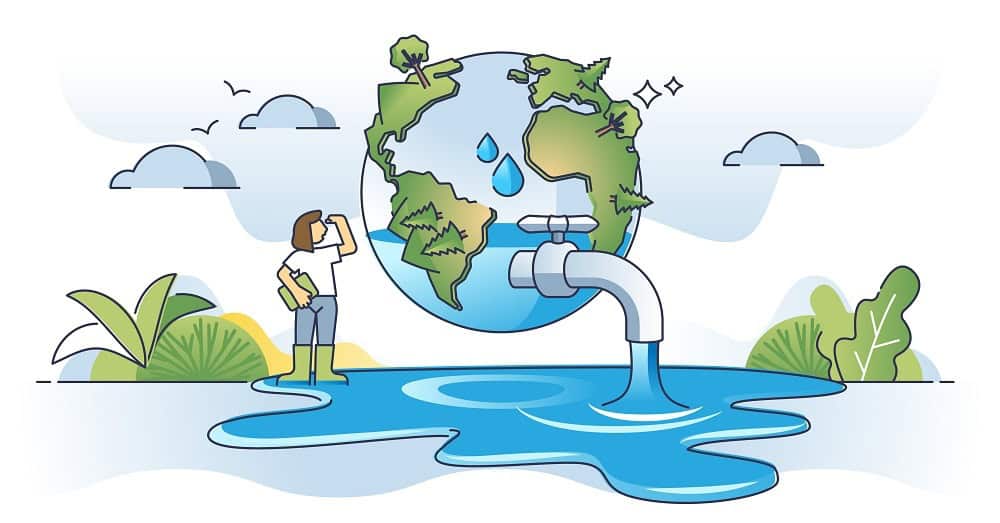Water is one of our most precious resources, and conserving it is essential for our future. Schools, as centers of learning and community activity, play a crucial role in teaching and practicing water conservation. This article explores practical ways to conserve water in schools, highlighting simple yet effective methods that can make a big difference. Let’s dive into how we can conserve water in the school environment and create a sustainable future for all.
Table of Contents
Why Water Conservation is Important
Water conservation is critical because water is a finite resource. Only 1% of the Earth’s water is suitable for human use, and this small percentage must meet the needs of an ever-growing population. By conserving water, we ensure that there is enough for future generations and reduce the energy and resources required to treat and deliver water. Schools can lead by example, demonstrating sustainable practices to students and the broader community.
Understanding Water Usage in Schools
Schools use water for a variety of purposes, including drinking, sanitation, cooking, cleaning, and irrigation. Understanding where and how water is used can help identify areas where conservation efforts can be most effective. Conducting a water audit is a good starting point to assess the current water usage and pinpoint opportunities for saving water.
Fixing Leaks and Drips
A single dripping faucet can waste gallons of water each day. Fixing leaks and drips is one of the simplest and most cost-effective ways to conserve water in schools. Regular maintenance checks can identify leaks early, and prompt repairs can prevent significant water loss. Encourage students and staff to report leaks immediately, turning it into a collective responsibility.
Installing Water-Saving Devices
Installing water-saving devices, such as low-flow faucets, dual-flush toilets, and efficient showerheads, can significantly reduce water usage. These devices are designed to use less water without compromising performance, making them an effective solution for schools looking to conserve water. Additionally, using motion-sensor faucets and automatic shut-off systems can help minimize unnecessary water use.
Promoting Water Conservation Awareness
Raising awareness about the importance of water conservation can inspire the school community to adopt water-saving habits. Educational campaigns, posters, and workshops can highlight the benefits of conserving water and provide practical tips. Engaging students in discussions about water conservation and involving them in awareness activities can create a culture of sustainability within the school.
Encouraging Responsible Water Use
Simple behavioral changes can lead to significant water savings. Encouraging responsible water use involves educating students and staff about turning off taps when not in use, taking shorter showers, and using water-efficient practices in daily activities. Setting a good example and reinforcing these behaviors can help embed water conservation into the school’s culture.
Implementing Water Recycling Systems
Water recycling systems, such as greywater systems, can be installed to reuse water from sinks, showers, and drinking fountains for non-potable purposes like irrigation and toilet flushing. These systems reduce the demand for fresh water and make efficient use of available resources. Schools can explore various water recycling options and choose systems that best fit their needs and budget.
Optimizing Irrigation Practices
School gardens and sports fields often require significant amounts of water for irrigation. Optimizing irrigation practices, such as using drip irrigation, watering during cooler parts of the day, and planting drought-resistant plants, can reduce water consumption. Regularly maintaining irrigation systems and adjusting them based on weather conditions can further enhance water efficiency.
Incorporating Water Conservation into the Curriculum
Integrating water conservation into the school curriculum can educate students about the importance of preserving this vital resource. Lessons on the water cycle, the impact of water shortages, and practical conservation tips can be incorporated into science, geography, and social studies classes. Hands-on activities, such as water conservation projects and experiments, can reinforce learning and foster a deeper understanding of the topic.
Engaging Students in Conservation Projects
Involving students in water conservation projects can make learning about sustainability more interactive and impactful. Projects could include creating a rainwater harvesting system, conducting water audits, or designing and implementing water-saving campaigns. These activities not only teach students valuable skills but also empower them to take action and make a difference in their school and community.
Using Technology for Water Management
Technology can play a vital role in managing water usage effectively. Smart irrigation systems, water usage monitoring tools, and leak detection sensors can help schools track and optimize their water consumption. By leveraging technology, schools can identify inefficiencies, address issues promptly, and ensure that water conservation efforts are continuously improving.
Monitoring and Evaluating Water Use
Regularly monitoring and evaluating water use is essential to track progress and identify areas for improvement. Installing water meters and maintaining records of water usage can provide valuable data for analysis. Schools can set water conservation goals, measure their achievements, and adjust their strategies as needed to achieve continuous improvement.
Creating a Water Conservation Policy
Developing a water conservation policy can formalize the school’s commitment to preserving water. This policy should outline the goals, strategies, and actions for reducing water usage and promoting sustainable practices. Involving the entire school community in the creation and implementation of this policy can ensure buy-in and long-term success.
Community Involvement in Water Conservation
Engaging the wider community in water conservation efforts can amplify the impact. Schools can partner with local organizations, participate in community water conservation events, and share their successes and learnings with other schools and community groups. Encouraging families to practice water-saving habits at home can also extend the reach of conservation efforts beyond the school.
Conclusion
Water conservation in schools is not just about saving water; it’s about fostering a culture of sustainability and responsibility. By implementing the strategies outlined in this article, schools can significantly reduce their water usage and set a positive example for students and the community. Together, we can make a substantial difference in preserving our precious water resources for future generations.
FAQs
What are the simplest ways to conserve water in schools?
Fixing leaks and drips, installing water-saving devices, and encouraging responsible water use are some of the simplest and most effective ways to conserve water in schools.
How can schools raise awareness about water conservation?
Schools can raise awareness through educational campaigns, workshops, and integrating water conservation topics into the curriculum. Engaging students in discussions and projects can also help spread the message.
What technologies can help schools manage water usage?
Smart irrigation systems, water usage monitoring tools, and leak detection sensors are some technologies that can help schools manage and optimize their water usage effectively.
Why is it important to monitor and evaluate water use in schools?
Monitoring and evaluating water use helps track progress, identify inefficiencies, and ensure continuous improvement in water conservation efforts. It provides valuable data to set and achieve water-saving goals.
How can the wider community get involved in school water conservation efforts?
Schools can partner with local organizations, participate in community events, and encourage families to practice water-saving habits at home. Sharing successes and learnings with the community can amplify the impact of conservation efforts.











